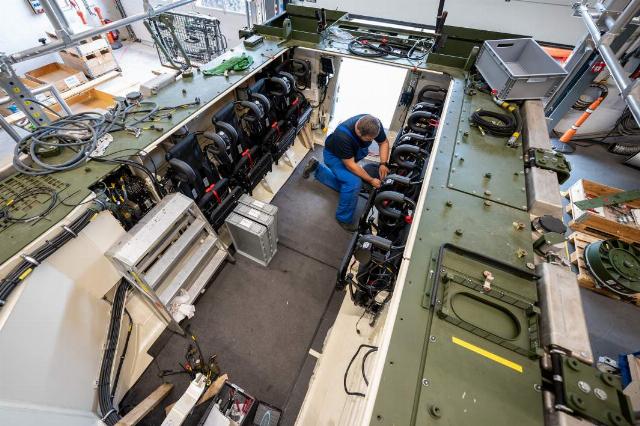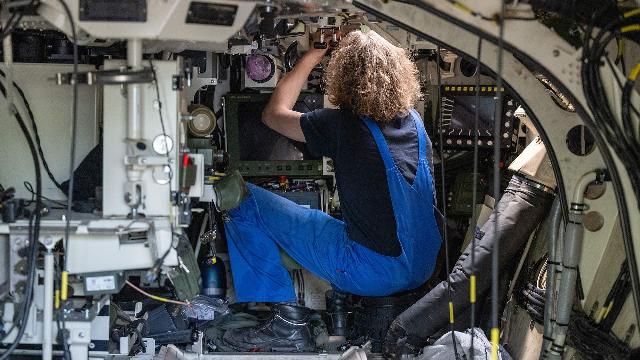And what sixth-generation aircraft projects are there in the world?
France and Germany have agreed to resolve differences on a joint project for the future combat aviation system, FCAS. As part of it, it is planned to create a drone system and a sixth-generation fighter. But besides FCAS, there are also its competitors in Europe. What is the situation with the implementation of European fighter projects of the future and which one has the best chance of success — in the material of Izvestia.
What should be the sixth generation fighter
German Chancellor Friedrich Merz and French President Emmanuel Macron have agreed to resolve differences (we are talking about funding shares) on a joint project of the future combat aviation system, FCAS (Future Combat Air System). As part of this program, it is planned to create a bundle of the sixth generation NGF fighter (Next Generation Fighter), RC drones (Remote Carriers) led by it, and the CC (Combat Cloud) information management cloud software system. The ambitious FCAS project involves companies such as Dassault Aviation (France), Airbus (Germany) and Indra (Spain). Utilitarily, the program plans to prepare a replacement for the French Rafale fighters, as well as the German and Spanish Eurofighters, with a jump through the fifth and transition immediately to the sixth generation of fighters.

The Eurofighter fighter
Image source: Photo: Global Look Press/Jens Buttner
What capabilities should a sixth-generation fighter have? Of course, they will change in the process of the appearance of real samples of technology, but the general appearance of the future can be folded. First, the new generation fighter should become even more invisible. Moreover, we are talking about the invisibility of aircraft in all ranges — in the radar, infrared and visible spectrum. Attention will be paid to both the acoustic appearance of the aircraft and the exterior.
Secondly, the new generation should have a "smart" airframe skin: due to sensors and radars, the aircraft should get an all-round view of the surrounding space.
Thirdly, the engine and airframe of the aircraft must ensure maximum efficiency at all speed modes — from minimum landing speeds to maximum speeds. Moreover, the option is not excluded here — the possible maximum flight speed for some machines may be hypersonic, that is, at the level of five speeds of sound (5M).
Fourth, sixth-generation aircraft should be capable of unmanned operation. There are subtleties of interpretation here — it is likely that the first cars will have unmanned modifications, and that's it.

Photo: Global Look Press/Philipp Schulze
Image source: iz.ru
Fifth, fighter jets should be integrated into future combat management information systems. This is not just about connecting to such systems, but about working with the continuous exchange of information, with the transmission and receipt of target designation, and perhaps even with commands to use weapons.
Finally, sixth, weapons systems based on new physical principles, such as laser systems, may appear on new fighters. It can also be hypersound.
What are the projects of the sixth generation fighter
In general, the involvement of an aircraft in one generation or another is not always strict, and it is quite possible that only certain criteria will be sufficient. The closest candidates for inclusion in the new generation are leading the Chinese comrades: Two cars are attributed by the media to the new generation at once — Chengdu J-36 and Shenyang J-50. At the same time, it is likely that not even all the requirements for fifth-generation aircraft are fully fulfilled by Chinese machines.

Trump announced the sixth-generation high-tech fighter jet, the F-47
Image source: Photo: Getty Images/Anna Moneymaker/Staf
The United States here presents the latest F-47 fighter jet, which we have not yet fully seen. Russia is likely to be represented by the promising MiG-41/PAK DP long-range interception system. Finally, there are two European projects: NGF (France, Germany, Spain, which is being developed as part of the FCAS project) and the second European project, Tempest. This is a joint British GCAP (Global Combat Air Program) program with Japan and Italy. India, which is also interested in the development of both the fifth and sixth generations, may join it.
As part of the program, requirements are still being collected and mockups of the future supersonic fighter are being discussed. It is clear that the aircraft will be a conditional "invisible" and will carry weapons only in internal compartments. The first Tempest demonstrator aircraft is scheduled to fly in 2027, and production of some structural components has already begun for it. But production cars will see the light of day only closer to 2035. In the meantime, the consortium is cheerfully recruiting new members. The offer was made to India. Australia and Canada are next in line. Other project participants are also possible.
The situation is similar with the first project. The NGF in the French version should have a deck modification, since France has an aircraft carrier. Conventional aircraft are sufficient for other participating countries, but in combination with future wingman drones, which can become universal launch platforms for attack and fighter missile systems.

Photo: Global Look Press/Karl-Josef Hildenbrand
Image source: iz.ru
The Europeans have already faced difficulties, as it has become obvious that the cost of developing a modern, promising aircraft is noticeably higher than the cost of creating aircraft in the 1990s and 2000s. High technology is not cheap, and it is assumed that the sixth generation fighter, and even accompanied by a flock of drones, will be worth billions of euros. But the military-industrial complex does not abandon large budgets, and the projects are very promising and promise many thousands of new jobs.
At the same time, European politicians are faced with the question of how to redistribute the burden of billions of dollars of expenses among themselves. In other words, no one wants to abandon projects, but trying to shift costs is just right. This is what chancellors and prime ministers and presidents do.
Dmitry Kornev
Roman Kretsul

